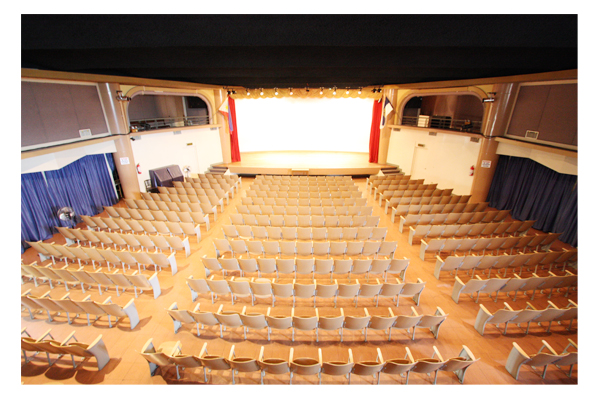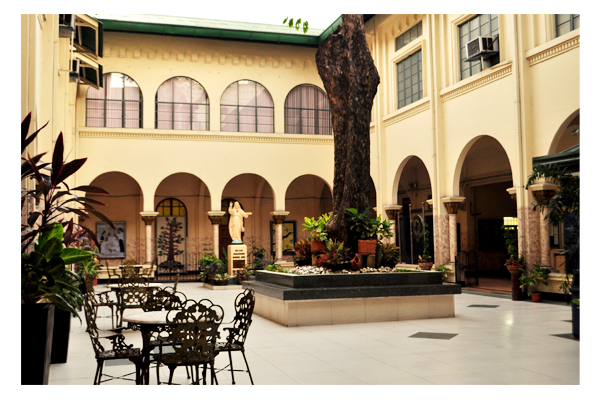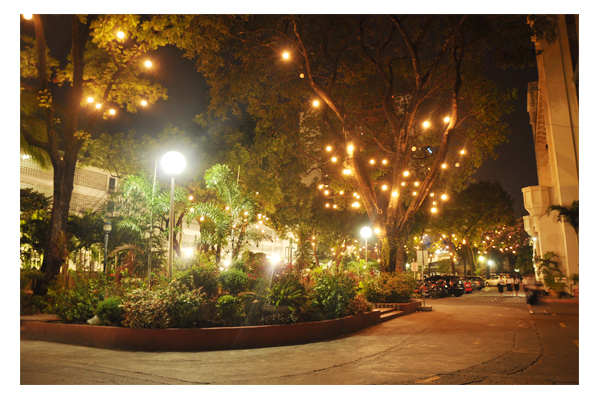St. Scholastica's College Manila
- Dominus Est!
- Dec 22, 2020
- 4 min read
…a school for the Lord’s service creates leaders for social transformation
by Mrs. Nerissa P. Gomez
ITS MISSION AND VISION
St. Scholastica’s College Manila is a Catholic Benedictine educational institution that provides its students with a holistic formation that is anchored on academic excellence in order to mold them into critically aware and socially responsible leaders and agents of social change.
A GLIMPSE OF ITS HISTORY On September 14 of this year, as the Church celebrated the “Feast of the Exaltation of the Cross,” St. Scholastica’s College Manila commemorated the coming on September 14, 1906 of the first five Missionary Benedictine Sisters from Tutzing, Germany. This celebration marked 113 years of the Benedictine Sisters’ presence in the Philippines that began with five Missionary Benedictine Sisters – Mo. Ferdinanda Hoelzer who was the Mother Prioress, Sr. Petronilla Keller, Sr. Crescentia Veser, Sr. Winfrieda Mueller, and the novice Sr. Alexia Ruedenauer – who all responded to the call of the Church for religious men and women to continue to nourish the faith of the Filipino people after the Spanish friars had returned to their homeland, leaving our country with just a few priests. This mission of the five sisters was to spread a way of life according to the rule of St. Benedict.
They first resided in Moriones, Tondo which was a very poor section of Manila at that time. In her book, The Missionary Benedictine Sisters in the Philippines, the late Sister Caridad Barrion asked, “Could it be that one of the big factors in assigning the Sisters was their desire to work among the poor, among the thousands of children who grew up without any instruction?” Such desire was greatly evident when they opened the school on December 3, 1906 for the first three grades with only eight children (two boys and six girls) from well-to-do families and 50 non-paying students who attended the “Free School” housed in a windowless wagon-shed.
With enrollment increasing after a year, the Sisters transferred to San Marcelino St., to a land offered by the Most Reverend Jeremias Harty, Archbishop of Manila. That was on Christmas Eve in 1907, the same year that Sr. Baptista Battig, OSB, a concert pianist and pupil of the great musician, Ludwig Deppe, opened the Conservatory of Music and pioneered formal music education in the Philippines. Two years later, the school was formally named St. Scholastica’s College.
As the years passed, enrollment continuously increased, and the need to have a much bigger space arose. For the second time around, Archbishop Harty offered the Sisters a church lot and it was at 1523 Pennsylvania Avenue, now 2560 Leon Guinto St., Malate, Manila, where the school has been located since 1914. During the inauguration of the new school, Governor Francis Burton Harrison expressed his wish to the Scholasticans to “work for the glory of God and for the good of the Filipino people.”
In 1925, the US government’s Educational Survey Commission and the Board of Educational Survey highly commended St. Scholastica’s College for being one of the two schools which maintained “the highest standards with reference to physical plant, teaching personnel and methods of instruction,” making SSC a school for young women that was highly sought-after especially by those from affluent families.
In 1945, St. Scholastica’s College also experienced the damaging effects of war. On February 13, an incendiary bomb hit St. Cecilia’s Conservatory of Music, causing great damage to it and other school buildings, but with God’s providence, no sister got hurt from the incident. Like a phoenix, SSC rose from the ashes, so that in June of the same year, classes resumed to continue to educate young women. Years later, SSC, Manila graduated a significant number of Filipinas who have become the first in their own fields of expertise. Among them were Mother M. Irene Dabalus, OSB – the first Filipina elected Prioress General and the first non-European to hold the post, Justice Cecilia Muñoz Palma – the first woman chief justice of the Supreme Court, Aurora Carandang – the Philippine’s first woman commercial pilot, and Corazon Cojuanco Aquino – the first woman president of the country.
THE CULTURE OF BENEDICTINE EDUCATION
In her aforementioned book, Sr. Caridad Barrion, OSB, described the education given at SSC, Manila as an integral formation for the “total person.” It is a philosophy of education that combines academic excellence with the religious-socio-pastoral and civic formation that would prepare the Scholasticans to be contributive members of the Church and society. This educational philosophy is coupled with the Benedictine culture of Ora et Labora, a balanced way of life that combines prayer and work, together with the Ten Benedictine Hallmarks. Since 1975, the school has committed itself to being a socially-oriented school where students are aware of the current issues, conversant with the changing times, and actively involved as agents of change in transforming society. This is addressed through the school’s advocacies, namely: Empowerment of Women, Social Justice and Peace, Poverty Alleviation, and Environmental Awareness and Care for the Environment. At the turn of the millennium, a periodical re-examination of the existing curricula, course offerings, methodology, and a co-curricular program of activities across all units – grade school, high school (junior and now senior), and college – was launched in order to respond to the needs of the 21st century learners. Some of the school’s highlights are the Electoral Process Module, where the grade school students are taught to choose their leaders following the process of the national elections; the Institutional Buwan ng Wika where various Philippine folk and cultural activities are celebrated, the Season of Creation, the Marian Month, and the Women’s Month, as well as the various liturgical celebrations of the Catholic Church, all of which contribute to the holistic Benedictine formation of each and every Scholastican.
IN CONCLUSION
St. Scholastica’s College, Manila believes that learning does not only happen inside the four walls of the classroom, nor is knowledge gained from books alone. Meaningful learning takes place through the practice of the living curriculum where students integrate what they have learned from school with what they experience in real life situations, enabling them to think and respond critically. After all, Scholasticans are leaders and agents of positive change who will transform society for the welfare of the future generations.
Be a leader! Be an agent of positive change! Enroll in St. Scholastica’s College, Manila!
To know more about St. Scholastica’s College, Manila, you may visit these website/Facebook accounts: www.ssc.edu.ph































Comments